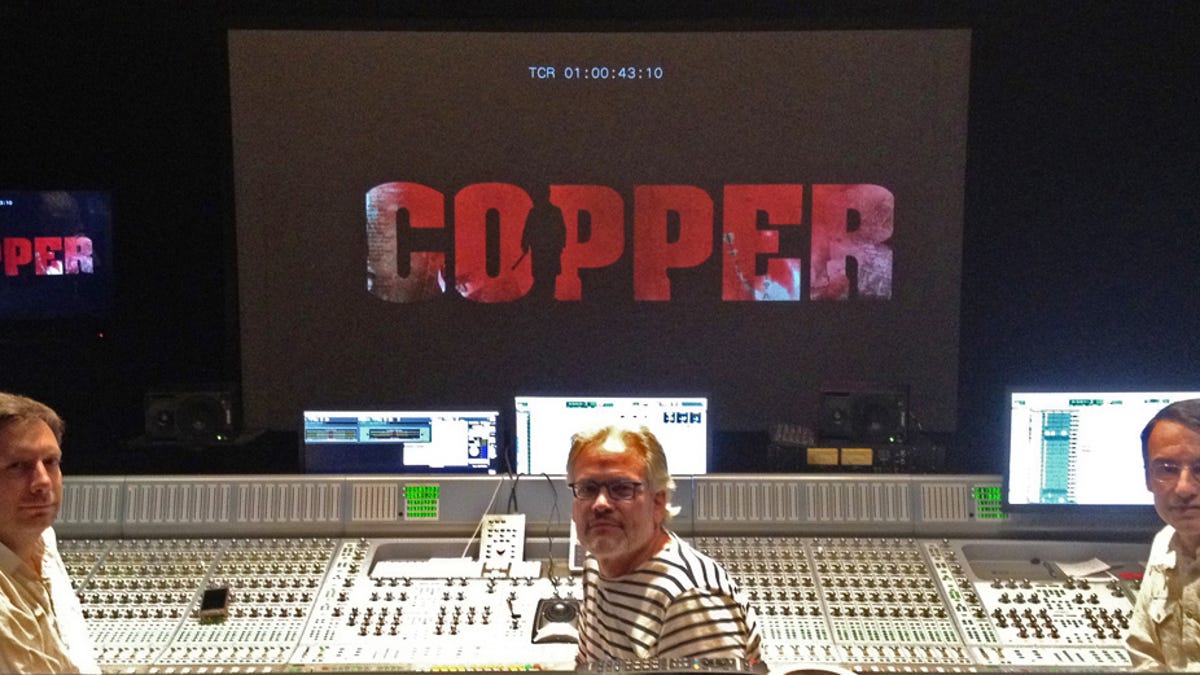Mixing it up on the set of 'Copper'
The Audiophiliac talks with Frank Morrone about mixing sound for BBC America's new show "Copper."

"Copper," the new BBC America crime drama, is set in NYC in 1864, while the Civil War was still raging. I was intrigued because the 10-part series was created by Tom Fontana, who did "Homicide: Life on the Street" and "Oz," and on a more personal level, my old friend Frank Morrone is a sound mixer for the show. We met in 1999 when I was writing a feature story on mixing sound for Ron Howard's film "Edtv," and more recently, Morrone shared some of his experiences about mixing sound for the "Lost" TV series. You might be surprised to learn that only a small portion of the sound on movies and TV shows is actually recorded when the film or video is shot; most of the sound is added in later stages of production. It's the job of the sound designers and mixers to make it all sound completely natural, as if there were no mix at all.
The biggest difference between mixing sound for movies and TV is time. A major Hollywood film like "Public Enemies" can take many months to mix, mostly because of the number of ongoing changes and reshoots involved. The "Lost" sound crew wrapped up each episode in four days, and now with "Copper," just two days. Morrone loved working on "Lost," but I can still hear the fatigue in his voice when he says that no TV show will ever be harder to mix. For the finale, the crew was dealing with 450 tracks, so everything he's worked on after that was easy. Feature film mixes progress at a relative snail's pace, but each film has an original sound design, and the level of sonic detail in a big-budget film is much higher than on a TV show. So yes, the best-sounding movies sound better than the best TV series.
All of the "Copper" sound elements are recorded in 48kHz/24-bit uncompressed audio. The use of surround channels and LFE/subwoofer tracks are pretty subtle on "Copper."
The primary mix for "Copper" is the 5.1 channel version for the HD broadcast, Blu-ray, and DVD releases; there's a separate stereo mix for standard-definition TV broadcasts and streaming. That mix has reduced soft-to-loud dynamic range, compared with the 5.1 version. The engineers monitor the sound on a professional JBL multichannel speaker system, with JBL 18-inch subwoofers in a studio at Deluxe Laboratories in Toronto. Morrone continues to mix feature films and other TV shows, including the upcoming ABC series, "Last Resort."
With period shows like "Copper," the mixers are trying to make everything sound authentic and natural. Morrone has to devote a lot of time to eliminating 21st-century sounds -- like the buzz of lighting systems or trucks whizzing by on the highway near the set -- from making their way onto the soundtrack. For "Copper," the only sound that's recorded live on the set is the actors' dialogue; the street sounds, gunshots, horses, and background sounds are all created after the fact by a team of sound designers and mixers. Morrone and the crew work with up to 60 dialogue tracks, 48 music tracks, and 212 sound effects tracks.
When I asked Frank about why there are so many dialogue tracks, he explained that in outdoor scenes with crowds and street vendors, each voice may be on a separate track. When the original dialogue recordings have too much noise or quality issues, the engineers rerecord the actors in a quiet studio, and those replacement bits wind up on separate tracks. Morrone later adds ambiance and "room sound" to the original and replacement dialogue tracks to give the illusion that each actor is in the appropriate acoustic setting you see on screen.

